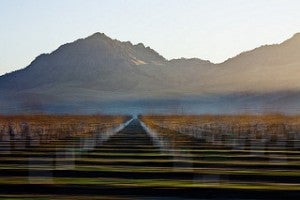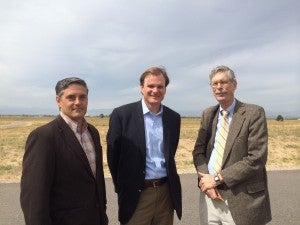My quest to balance nature and the agricultural economy

On a clear day I can see the Sutter Buttes, the smallest mountain range in the world, from my office in Sacramento. It’s a landscape that inspires me.
Although the Sacramento Valley is not without its problems, when I look out my office window, explore the local outdoors with my kids, or catch the woodsy whiff of a pencil made from California incense cedar (yes, I collect those), what I sense in those sights, sounds and smells is balance.
Striking the right balance in our working landscapes
The Sacramento Valley is a real working landscape. I use that term a lot: “working landscape.” By that I mean a place where natural resources are used to provide economic benefit – “working” to support jobs, industries and economies, both local and of scale – in a way that strikes a balance between maximizing profits and sustaining the natural resources, or the “landscape.”
Striking that balance between economic output and environmental protection has been a pillar of my work at EDF. I’ve long believed that if we can find and replicate this delicate mix everywhere, we’d be in much better shape.
Cooperation is key

The media draw a lot of negative attention to the hostility and disagreements in our culture, pitting environmentalists against farmers and ranchers, for example.
That’s not my story. Nor is it the story that I have seen unfold over my career.
EDF’s approach to environmental solutions involves a great deal of collaboration. I can’t tell you the number of times I’ve sat around a table with an industry representative on my left and a rancher on my right. Sure, sometimes the conversation gets a little weedy, but it is always a constructive dialogue – everyone sensitive to each other’s point of view.
As one of two environmental representatives on California’s Food & Agriculture Board, I appreciate the need for such open discussions. In that role, I wrestle to understand the best ways to enhance the environment in ways that work for farmers, ranchers and foresters, whose economic and ecological contributions to the state are incredibly valuable. I also advise government decision-makers by helping them understand the value to California agriculture of clean air, clean and abundant water, rich soils and thriving wildlife habitat.
Rallying around our common goals
Agriculture and environmental communities often share the same values, but get tied into knots when forced to takes sides, oftentimes in legal battles.
Most folks in rural America value abundant wildlife, clean water and fresh air. But they also want rules that make sense and that give them the ability to solve problems without complicated prescriptions from regulators who don’t understand their land or their business.
If we can create social and political consensus around policies that reward people for providing ecological benefits, we’d be more likely to reach our common goals.
Protecting wildlife, and human life on earth

As I look to the future, my focus is on how to prevent the extinction of species, which is a critical indicator of the health of the planet. When you lose wildlife, you’re likely losing the vital natural resources also crucial to human survival.
Whether it’s making room for the greater sage-grouse to strut its stuff, or planting milkweed for the monarch butterfly to lay its eggs, we need to find a way to simultaneously protect wildlife and provide enough food, fuel and fiber to support human life on earth.
It’s not a question of the economy or the environment. We need both.
I will continue working to find that balance for each new species I encounter – each its own puzzle. Fortunately, I can find inspiration whenever I admire the landscape outside my office window.
Related:
From California to Idaho: Protecting rural pit stops on the monarch butterfly’s great migration >>
New White House mitigation standard opens market opportunities for farmers and ranchers >>
Ranchers and conservationists step up to avert listing of sage-grouse >>












